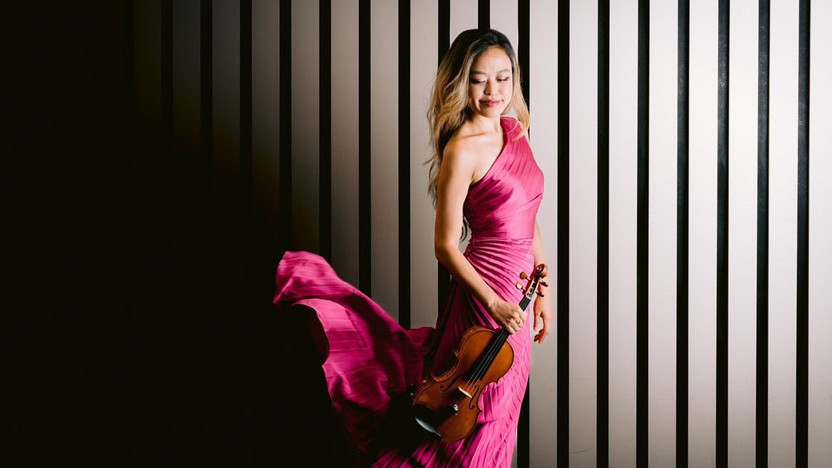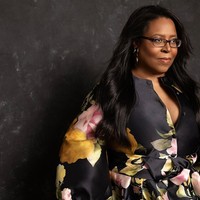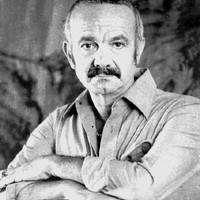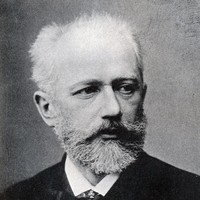Piazzolla’s The Four Seasons of Buenos Aires



Co-Commissioned by the Sphinx Organization, New World Symphony, and Carnegie Hall Corporation
Tracing Visions embodies the common threads of community and empathy, reminding us that we are one people. The first movement, TILL. is an elegy dedicated to parents of the Uvalde massacre, Emmett Till, and even Ruby Bridges' mother, the latter who had to find strength enough to allow her child to face the dangerous climate of hate in the midst of desegregation. Written during the time of Uvalde, it began to expand itself to be a voice for the grief that we all continue to feel for the tragedy. There is a section within the music that personifies the ugliness of apathy and violence of domestic terrorism, which is met by an anthem of fierce parental statement – a battle cry that all children ARE human beings who have a right to exist within a safe environment, in order to for the genius blueprint seed to grow within each of them.
The second movement, called Amandla! (Which means “power!” in Zulu) is a tour de force juba that celebrates the work of the Sphinx Organization. As a concert finale-style work in its own right, Amandla! personifies a vision of unity, with melodies and grooves that depict many cultures coming together into an empowered tapestry of voices. To the composer, this is the very definition of the ethos of Sphinx. At certain points within the music, small chamber configurations briefly emerge to recognize the breadth and depth of Sphinx’s work in developing future leaders within the arts industry. Featuring the morse code word, “Sphinx” at the beginning as the main motif throughout, this jubilation movement fills the stage with dancing rhythms that allow the “Familia” to cut loose with joy.
Valerie Coleman ©2023

Astor Piazzolla merged Argentinean popular music and 20th-century classical styles to spearhead the revolutionary movement known as “new tango.” Born in Argentina, Piazzolla spent much of his childhood in New York. At age eight, he took up the bandoneón, a South American folk instrument in the accordion family. He moved back to Argentina as a teenager and joined traditional tango orchestras, soon establishing a career in Buenos Aires. Besides performing in dance bands and arranging songs for the large ensembles, Piazzolla also pursued a separate path composing concert music. Like many aspiring composers of his generation, he found his way to the legendary teacher Nadia Boulanger in Paris, who encouraged him to drop his Igor Stravinsky/Béla Bartók/Maurice Ravel approximations and embrace his true voice in tango.
Before long, Piazzolla assembled the group that would be the platform for most of his groundbreaking work. The Quinteto Nuevo Tango (New Tango Quintet) featured Piazzolla on bandoneón, plus violin, bass, piano and electric guitar. It was for this group that Piazzolla wrote his Quatros Estaciones Porteñas (Four Seasons of Buenos Aires) between 1964 and 1970. As with many of his small-group compositions, the Four Seasons have been reshaped by various arrangers for classical ensembles. The version for solo violin with strings, arranged by Russian composer Leonid Desyatnikov, stands as an impassioned response to Antonio Vivaldi’s most famous violin concertos, the “Four Seasons.” The percussive, dancing origins of Piazzolla’s music are on display throughout, and Desyatnikov’s arrangement makes ample use of the string ensemble’s extended techniques and unconventional sound effects to carry the rhythmic drive of the music.
Aaron Grad ©2025

In the period when imperial Russia was trying to establish its voice and reputation in the realm of European art music, Pyotr Ilyich Tchaikovsky was an outlier among his nationalist-minded peers. After enrolling in the inaugural class of the St. Petersburg Conservatory and studying with Anton Rubinstein, Tchaikovsky graduated into a teaching job at another brand-new institution, the Moscow Conservatory, led by Anton’s brother, Nikolai Rubinstein. Working within academia, Tchaikovsky turned to Western models and immersed himself in the study of French, Italian and German-Austrian traditions, especially the music of Wolfgang Amadeus Mozart, Tchaikovsky’s highest idol of all.
Meanwhile his contemporaries that came to define that generation — the group eventually known as “The Russian Five” — were determined to forge a Russian sound untainted by the European influence. Tchaikovsky was mentored for a time by the ringleader of that group, but he drifted away as the gap widened between his cosmopolitan worldview and the nationalism of “The Five.” For all the self-doubt and isolation it created, Tchaikovsky’s path paid off in the immortal music he wrote, the first from Russian to fully integrate itself into the Classical canon.
The First String Quartet from 1871 exhibits how well Tchaikovsky had integrated the lessons of Joseph Haydn, Mozart and Ludwig van Beethoven, but the crucial extra ingredient was in fact a local source of inspiration. While visiting his sister’s estate in Ukraine two years earlier, Tchaikovsky overheard a carpenter singing a folksong that became the main theme of the Andante cantabile second movement — the portion of the quartet that supposedly moved the writer Leo Tolstoy to tears at a performance in 1876.
This Chamber Symphony expands Tchaikovsky’s string quartet into an essay for small orchestra, in a version commissioned by the Orpheus Chamber Orchestra from composer Christopher Theofanidis. “I have always been a great admirer of Tchaikovsky’s music and his brilliant orchestration,” Theofanidis wrote, “and so it was a real pleasure for me to explore this string quartet and his style of orchestration more generally. I studied many of his great works to understand certain ‘Tchaikovsky-isms,’ and I also studied works written in close proximity to the quartet to understand hallmarks of that earlier style.”
Tchaikovsky’s language in this work is lean and rhythmic, drawing maximal impact from small cells of music — an approach modeled by Beethoven in the quartets and other works from his “middle” period. The distinguishing trait of Tchaikovsky’s first movement is the persistent rhythmic motive that cuts against the grain of the underlying 9/8 meter, a graceful effect that never loses its fascination. The Scherzo offers dance-like rhythms that again defy expectations, with lively phrases contradicting the triplet pulse.
As Theofanidis noted, “A transcription of this nature presents certain challenges, not the least of which is that this small orchestra was not a medium that Tchaikovsky himself worked in. One clue for me, however, turned out to be Tchaikovsky’s love of Mozart. Although Tchaikovsky didn’t entirely respect the classical sound when he arranged Mozart’s music in his Suite No. 4 (Mozartiana), there are enough clues to show what Tchaikovsky loved in that clean sound world, and that was an important key for me.”
Aaron Grad ©2025
Get driving directions and find nearby parking.
Find dining options close to the venue.
View seating charts to find out where you'll be seating.
Get driving directions and find nearby parking.
Find dining options close to the venue.
View seating charts to find out where you'll be seating.
